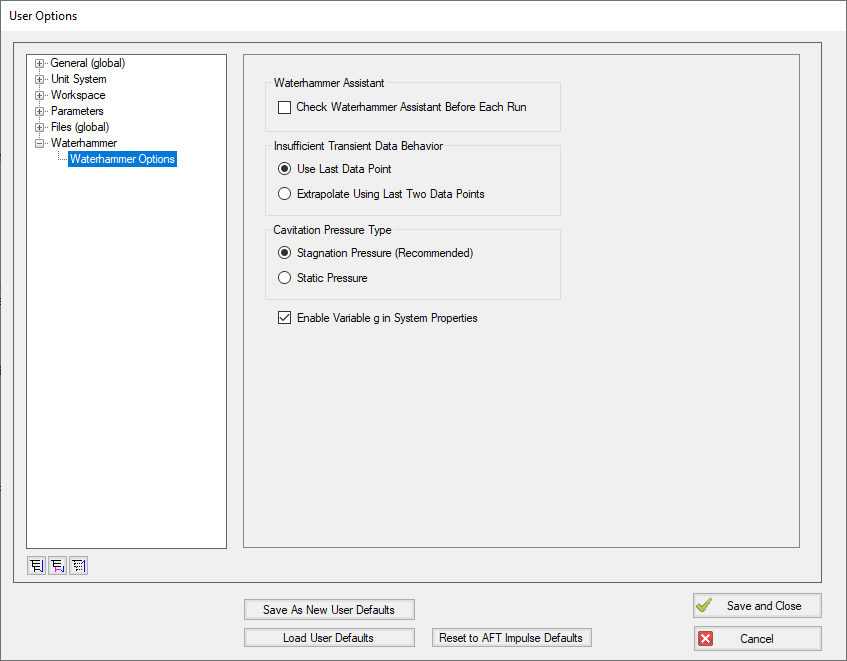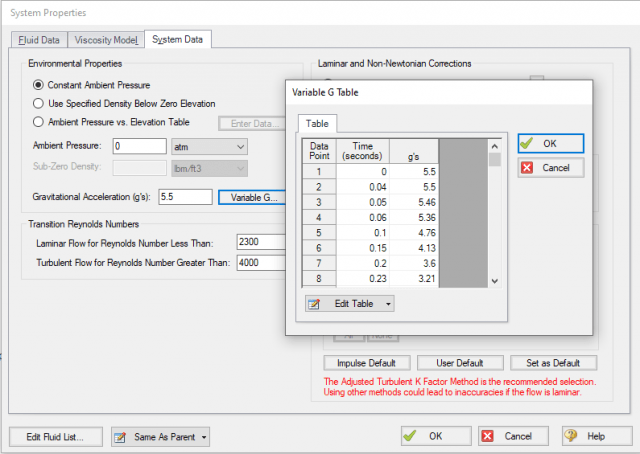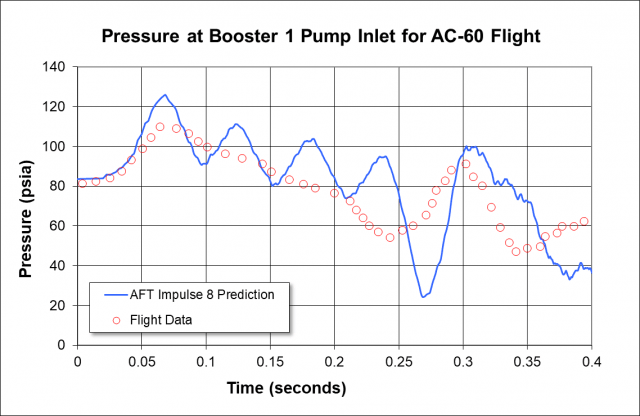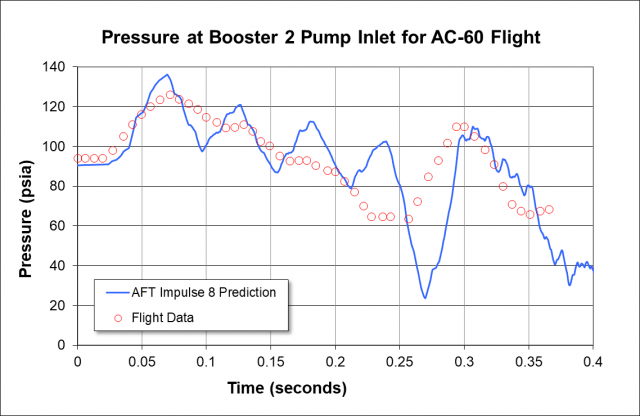When I wrote AFT Impulse 1 back in 1996, I slipped in an undocumented feature to make it capable of modeling the first waterhammer project I did in industry. Since then, this feature had a secret (i.e., undocumented) way of being enabled. AFT Impulse 8 will be released any day, and we have finally made this feature accessible to all.
In the User Options window, you can turn on "Enabled Variable g in System Properties" as shown below in Figure 1.
Once enabled, the Variable G button is visible in System Properties and you can set your variable g table as shown below in Figure 2.
I ended up writing an ASME paper that discussed my first waterhammer project and you can find it on the AFT website here - Rocket Propellant Line Waterhammer Transients In a Variable-G Environment.
Figures 3 and 4 below show how AFT Impulse 8 predictions compare to flight data for AC-60 (taken as the g level varied, as discussed in the ASME paper). AC-60 launched in 1982 (when I was a second-year engineering student!). The data comparison below is pretty good!
If you look closely, AFT Impulse in Figs 3-4 does not agree perfectly with the simulation results in the ASME paper. I do not know exactly why, but suspect that AFT Impulse is better as it is based on Pressure, whereas my tool in the ASME paper was based on Piezometric Head – which does not lend itself as well to varying g levels.
In case you are curious, we have had customers in the aerospace industry inquire about this cool feature – and we told them how to enable it. Now it is there for all to see – and for you to use on your next rocket project! I am confident AFT Impulse is the only commercial waterhammer software that can do this trick.



